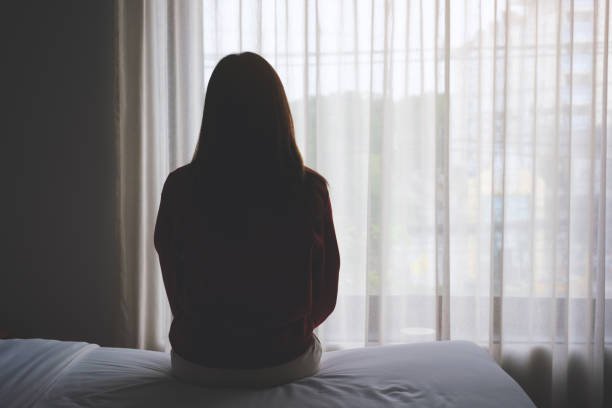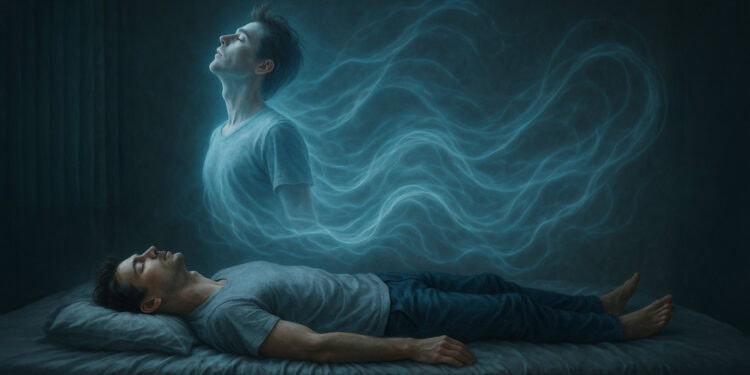It often begins before we even have words.
A raised voice. A door slammed in anger. The absence of a loving gaze. The silence after we cry. Or perhaps something far worse—a strike, a threat, a moment where we realized the world was not safe, and neither were the people we depended on most.
Childhood trauma isn’t always dramatic. It doesn’t always make headlines or leave visible scars. Sometimes, it hides in small, repeated ruptures—a parent’s cold indifference, the shame of being constantly corrected, the quiet fear of never being enough.
And then we grow up.
Or at least, our bodies do.
We graduate, get jobs, fall in love, make families of our own. To the outside world, we look functional, even successful. But inside, something is off. We don’t trust people. Or we trust them too quickly. We fear abandonment. Or we push others away before they can hurt us. We feel anxiety in calm moments. Or numbness in moments that should bring joy. We sabotage intimacy. We overwork. We people-please. We self-destruct. And we don’t always know why.
The truth is, we are still carrying the echoes of what happened—or didn’t happen—when we were small.
Childhood trauma doesn’t just disappear. It embeds itself in the nervous system, in the brain, in the way we see ourselves and the world. It becomes the lens through which we interpret relationships, stress, and love. And until we name it, feel it, and begin to heal it—it keeps shaping us.
What Is Childhood Trauma, Really?
Childhood trauma isn’t just the result of singular catastrophic events. It includes prolonged emotional neglect, chronic stress, humiliation, rejection, and the feeling of being fundamentally unsafe. It’s not only about what was done to us, but also about what we desperately needed and didn’t receive: comfort, validation, protection, connection.
Some children live in homes where physical abuse is rampant. Others live in silence, surrounded by coldness and perfectionism. Some grow up with alcoholic parents, walking on eggshells to avoid the next explosion. Others suffer quietly under the crushing weight of being the “good child,” the caregiver, the fixer.
Trauma, at its core, is not the event—it’s the nervous system’s overwhelming response to the event. What shatters one child might be tolerable to another, depending on support systems and temperament. But what all forms of trauma share is this: they interrupt the natural development of a safe, integrated sense of self.
And when development is interrupted, adaptation kicks in.
Children adapt to survive. They learn to dissociate from their bodies. They become hyper-vigilant. They silence their needs. They mold themselves to become what others want.
These adaptations often save them.
But in adulthood, they become the very behaviors that hold them back.
The Body Remembers
You can outgrow your childhood home, but you can’t outrun your nervous system.
When a child experiences trauma, the brain’s architecture literally changes. The amygdala—the fear center—becomes overactive. The hippocampus—responsible for memory and learning—shrinks. The prefrontal cortex—home of rational thinking and impulse control—develops differently.
This is why many trauma survivors feel “on edge” all the time. Their bodies are always scanning for danger, even when none is present. Their hearts race in calm situations. Their stomachs twist before conversations. Their sleep is broken, their muscles tight, their digestion fragile.
The body lives in a loop the mind cannot explain.
Adults who survived trauma often struggle with chronic health conditions—autoimmune disorders, migraines, fatigue, irritable bowel syndrome. These are not imagined. They are the body’s long-term response to living in a prolonged state of stress.
It is as if the body, long after the trauma has ended, is still trying to protect the child inside.
Relationships as Battlefields—or Sanctuaries
Perhaps the most heartbreaking legacy of childhood trauma is how it affects our ability to love and be loved.
Trauma distorts attachment. It teaches children that closeness is dangerous, that vulnerability invites pain, that love is conditional. So when these children become adults, they struggle in intimacy.
Some become anxiously attached—clinging, needing constant reassurance, fearing abandonment in every silence. Others become avoidant—pulling away, shutting down, struggling to trust anyone. Some oscillate between both, desperate for connection but terrified of it at the same time.
They may fall for emotionally unavailable partners. They may recreate the very dynamics they swore to escape. They may sabotage healthy relationships because safety feels foreign—and foreign feels unsafe.
The heartbreaking irony is this: we often repeat the past not because we want to, but because the nervous system is trying to find resolution. It leads us back to familiar patterns, hoping for a different outcome.
Until we understand this, we confuse trauma responses for love. We mistake chaos for chemistry. We call anxiety “passion.” We confuse being needed with being loved.
But healing begins when we stop reenacting the past—and start reparenting the wounded parts of ourselves.
The Masks We Learn to Wear
To survive trauma, many children become actors. They create personas to please, distract, or protect.
The overachiever, always chasing gold stars to prove worth.
The peacemaker, mediating conflict to feel safe.
The rebel, defying rules to reclaim power.
The clown, using humor to mask the pain.
The ghost, becoming invisible to avoid harm.
These masks are brilliant. They help us survive environments that were emotionally unlivable.
But they also become prisons.
As adults, we keep performing long after the threat is gone. We smile when we’re hurting. We stay busy to avoid feeling. We fix others to avoid fixing ourselves. We fear being truly seen—because being seen once led to pain.
To heal, we must take off the mask.
Slowly. Gently. In the presence of safety.
And we must remind ourselves that we are not the role we learned to play. We are the child underneath, waiting to be held.
Parenting with Trauma: Breaking the Cycle
Nothing brings unhealed trauma to the surface quite like becoming a parent.
Suddenly, the child you once were begins to rise inside you. The sounds your parents made echo in your voice. The panic you felt now surfaces when your toddler cries. The anger you repressed erupts when your child disobeys. You find yourself doing what was done to you—even if you swore you never would.
It’s not because you’re broken. It’s because trauma lives in the unconscious. And parenting, more than almost anything else, triggers the unresolved.
The good news is: this is not the end of the story. It’s the beginning of a new one.
Healing while parenting is not easy—but it is profound. Every time you pause before reacting, every time you apologize, every time you choose presence over punishment, you are rewiring generations of pain.
You are not doomed to repeat what hurt you.
You are capable of becoming the parent you needed.
And in doing so, you not only heal your child—you begin to heal yourself.
Why We Minimize Our Pain
One of the most common defenses among trauma survivors is minimization.
“It wasn’t that bad.”
“Others had it worse.”
“They did the best they could.”
“I was just sensitive.”
These statements aren’t just cognitive—they’re protective. Admitting we were harmed as children is terrifying. It threatens the loyalty we feel toward caregivers. It challenges our identity. It stirs up grief, rage, sorrow we spent years avoiding.
But healing begins when we stop ranking pain and start honoring it.
Your trauma doesn’t have to be the worst to be worthy of healing. It doesn’t need to be dramatic to be valid. If it hurt you, if it shaped you, if it lingers—it matters.
Your inner child doesn’t need you to justify the pain.
She just needs you to believe her.
The Longing for Home
Beneath all trauma is a longing. A deep ache to return to safety, belonging, love.
We search for it in relationships, in careers, in substances, in spirituality. We think if we just work harder, love better, meditate more, lose the weight, fix ourselves—then we’ll feel whole.
But healing doesn’t come from earning worth. It comes from remembering we were worthy all along.
The parts of you that over-function, overachieve, over-apologize—they’re not bad. They’re tired. They’ve carried too much for too long.
What they need is rest.
What they need is kindness.
What they need is you.
The Path Home: Healing in Adulthood
Healing childhood trauma is not about blaming—it’s about understanding. It’s about reclaiming agency in a life that once felt powerless.
It begins with awareness. Noticing the patterns. The triggers. The ways your past shows up in your present.
Then it requires feeling. Grieving what you lost. What you never had. What you needed and didn’t receive. Rage. Sadness. Grief. All of it is holy.
Then, reparenting. Becoming the safe adult your inner child never had. Speaking to yourself with kindness. Setting boundaries. Meeting your needs.
And finally, connection. Healing doesn’t happen alone. Whether through therapy, support groups, friendship, or spiritual communities, we heal in safe relationships. Relationships that say: “You are not too much. You are not too broken. You are not alone.”
Because you never were.
Even when it felt like it.
Especially then.
The Echo Can End with You
Childhood trauma echoes.
It echoes in marriages, in parenting, in politics, in art. It shapes cultures and countries. The unhealed child becomes the wounded adult who leads, governs, creates.
But it doesn’t have to keep echoing.
You have the power to quiet the echoes. To listen to them. To understand them. To honor their pain. And to write a new story.
Not one that denies the past.
But one that transcends it.






